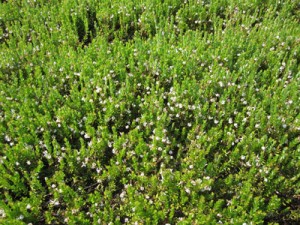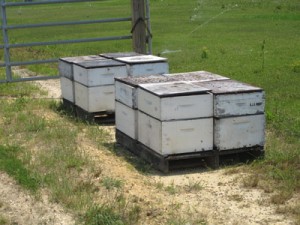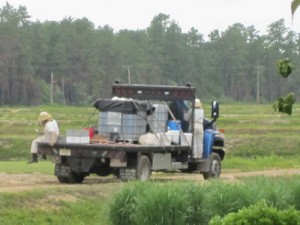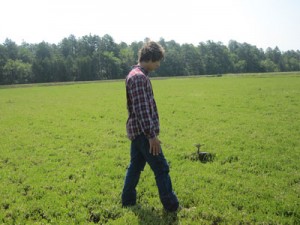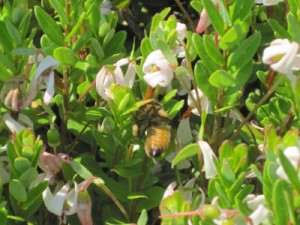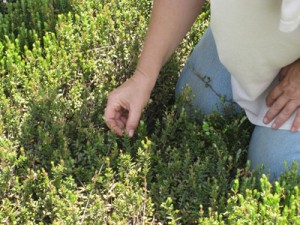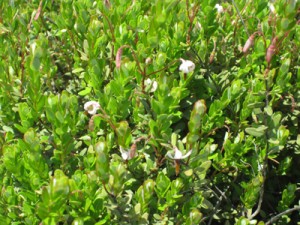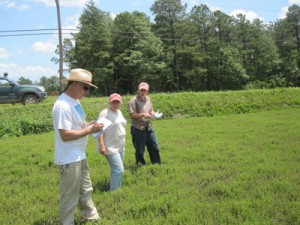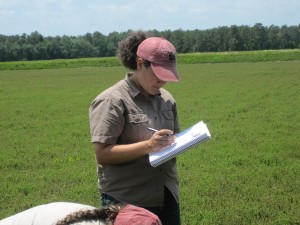One of the more important elements in the Pine Island Integrated Crop Management (PIICM) program is ensuring adequate pollination; flowers that are not visited by bees rarely produce fruit. To this end, we work with Fruitwood Orchards and other New Jersey beekeepers to temporarily install hives during the bloom period, usually at the end of May/beginning of June depending on the weather.
According to Jeremy Ham of Fruitwood Orchards, they ordinarily work the bees beforehand so that not a lot of maintenance is necessary; they’ll typically lose some after blueberry season, but for the cranberry farmers Fruitwood will put in more brood (eggs) and a new queen. Pine Island uses them strictly for pollination, so extra work with the bees is not usually necessary; however, the beekeepers return every week to pull the honey.
Research has shown that honeybees are competent at pollinating cranberry flowers as long as the weather remains satisfactory, according to the USDA. The recent heat wave bears this out. Going out with employee Timothy Haines to count bees, he states that he has rarely been stung. “On really hot days all they care about are the flowers,” he says. “It’s when things get overcast that they rise up a little.”
Counting bees is a necessity in order to make sure there are enough to cover the blossoms; to do this, Timothy sets a timer for ten minutes and then counts every bee he sees actually on the bloom. On this particular day at Blueberry Hill, he counts 126. “That’s good,” he says. “You want to have over a hundred.” The more bees, the more pollination, the greater the yield come harvest time.
All of us on the Pine Island team, including our vendors, do whatever it takes to ensure that we achieve our mission: to grow more high-quality cranberries at the lowest cost. By bringing in the bees at exactly the right time, we live our core value of continuous growth by producing more fruit per acre.

